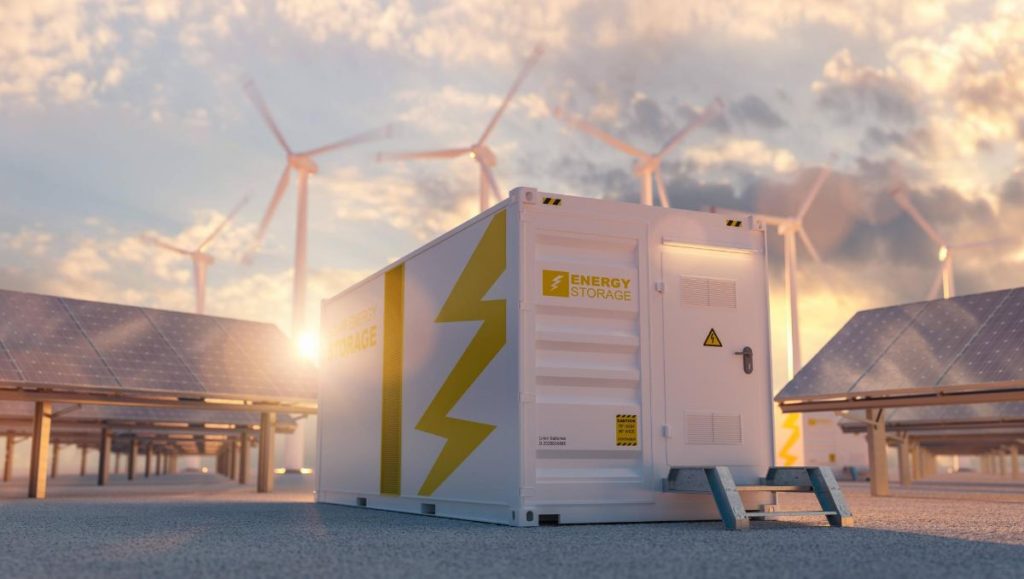Advantages of LFP battery
The renewable energy sector is booming, and container battery (LFP) are playing a vital role in its growth. These batteries offer several advantages for integrating with renewable energy sources, including:
High energy density: LFP batteries store more energy in a smaller volume compared to other battery technologies, making them ideal for space-constrained renewable energy installations.
Long lifespan: LFP batteries have a lifespan of 5,000 to 10,000 cycles, significantly longer than lead-acid batteries. This translates to lower operating costs and reduced maintenance requirements.
Safety: LFP batteries are inherently safe and have a lower fire risk compared to other lithium-ion battery chemistries.
Fast charging: LFP batteries can be charged quickly, making them suitable for applications where rapid energy storage and discharge are required.
But what are the key requirements for container LFP battery to seamlessly integrate with renewable energy sources?
Integration Needs:
Inverter Systems: Unlocking Compatibility
One of the fundamental components for integrating containerized LFP batteries with renewable energy sources is a robust inverter system, or a power conversion system (PCS). Inverters play a pivotal role in converting the direct current (DC) generated by solar panels or wind turbines into alternating current (AC), which is the standard for electrical power distribution. Selecting inverters that align with the specific requirements of LFP batteries ensures optimal performance and energy flow.
Advanced Battery Management Systems (BMS): Safeguarding Efficiency
A sophisticated Battery Management System is imperative for monitoring and controlling the performance of containerized LFP batteries. A BMS helps maintain optimal operating conditions, prevents overcharging or over-discharging, balances cell voltages, and ensures the overall safety and longevity of the battery system. Integrating a smart BMS enhances the efficiency and reliability of the energy storage solution.
Energy Management Systems (EMS): Orchestrating Energy Flow
To achieve seamless integration with renewable sources, containerized LFP batteries benefit from Energy Management Systems. EMS enables intelligent control of energy flow, allowing for strategic decisions on when to store, discharge, or feed surplus energy back into the grid. An effective EMS maximizes the utilization of renewable energy and optimizes the overall system performance.
Temperature Regulation Systems: Enhancing Longevity
LFP batteries exhibit better thermal stability compared to some other lithium-ion chemistries, but maintaining an optimal temperature range is still crucial for longevity. Integrated temperature regulation systems, including cooling and heating mechanisms, ensure that containerized LFP batteries operate within their ideal temperature range, minimizing the impact of temperature extremes on performance and lifespan.
Grid Connectivity: Enabling Grid Services
For containerized LFP batteries to contribute to grid stability and resilience, seamless grid connectivity is essential. This includes the integration of communication protocols and technologies like Modbus or CANbus that allow the battery system to interact with the grid intelligently for data exchange and remote monitoring. Containerized LFP batteries can provide services such as frequency regulation, peak shaving, and grid support when properly connected.
Safety Features:
The system should incorporate safety features such as overcharge and over-discharge protection, temperature monitoring, and fire suppression systems.
Scalability:
The system should be designed to be scalable to accommodate future growth in renewable energy generation.

Conclusion:
Container battery offer a versatile solution for storing and distributing renewable energy efficiently. By integrating advanced inverters, robust Battery Management Systems, Energy Management Systems, temperature regulation mechanisms, and ensuring grid connectivity, these batteries can seamlessly harness the power of renewable sources. As the world transitions towards cleaner energy practices, containerized LFP batteries stand as a reliable and sustainable choice for energy storage.